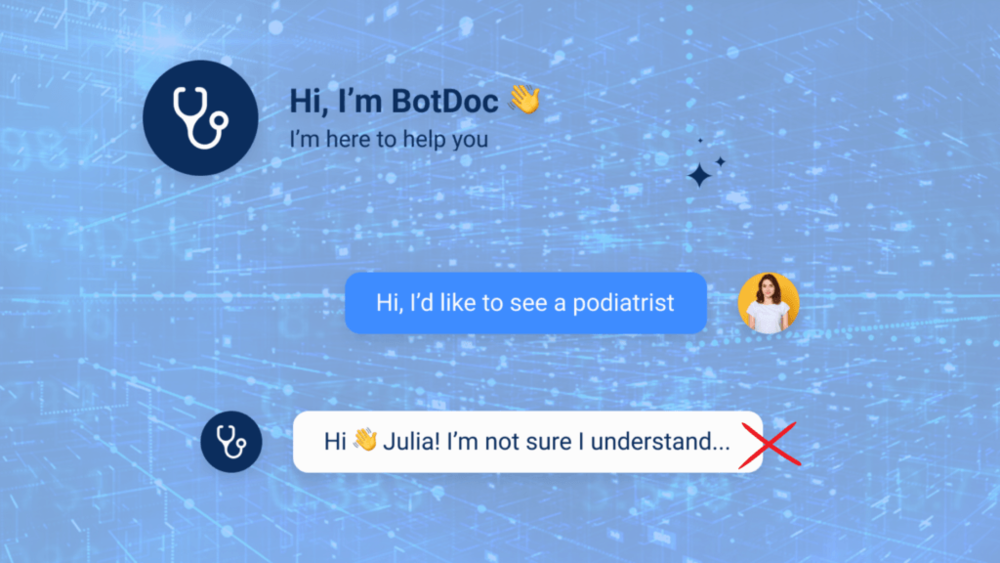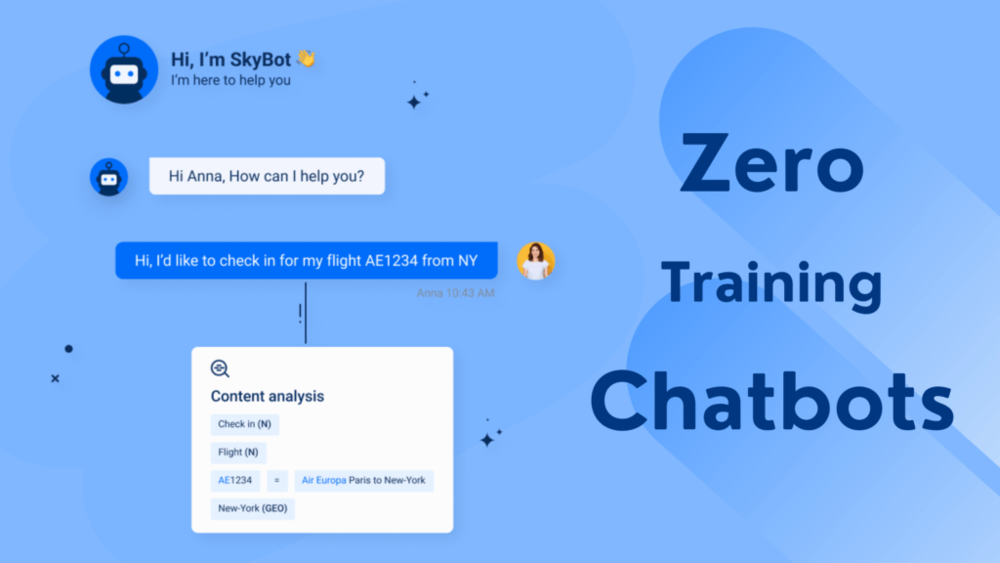Content
-Why Do Some Conversational AI Projects Take Too Long to Launch
-Why Do Machine Learning Chatbots Fail?
-Zero-Training AI: How to Quickly Launch a Chatbot
-So… Are Chatbots Effective Enough?
One of the first questions that arises when envisioning a new conversational AI project is how much time it’s going to take to have it up and running.
Some underestimate implementation times when it comes to chatbot solutions, but also, the time needed to achieve good results. Although return on investment (ROI) is always a key metric, if your project takes months or a year to be completely functional, the value of the investment might decrease.
A slow time-to-market can definitely make or break its success.
Why Do Some Conversational AI Projects Take Too Long to Launch?
There are many reasons why some AI projects take longer than expected to give the desired results.
First: Chatbot Project Planning
While some customers may already have a designed implementation plan that defines the team in charge of the project, the budget, the goals, and the expected results, some others start thinking about it only after buying the software. This extends the time until some real results are seen.
Second: Support Content for the Chatbot
These may include FAQs, answers, conversation flows, and other content sources. You may have a very robust Conversational AI solution in place, but if you haven’t built any content to answer common questions from your users, then it is all for nothing.
Third, and most importantly: the technology itself.
Depending on the approach your Conversational AI uses, it might take more or less time to have your project properly working to good standards. That’s why you need to know what to expect from different Conversational AI technologies in the market. We’ll analyze them below.
Are, then, chatbots really worth the investment and time?
Despite facing some challenges, very rarely a company will decide that a chatbot is not worth the investment. Current self-service rates can reach up to 90%, but even with an heavily unoptimized chatbot, Conversational AI can easily answer 40-50% of the queries by itself.
Why Do Machine Learning Chatbots Fail?

One of the most common technologies used for chatbots is Machine Learning, which takes a statistical approach to solving queries.
This means a chatbot or a virtual assistant will only be able to answer a question if they’ve seen a similar request before. This is why the chatbot needs to be fed with data, i.e. different phrasings and utterances of customer requests. It’s what we call ‘training’ the AI.
Machine Learning trainings require tons of data, in order for the algorithms to statistically decide how to answer a specific question. During the past few years, the hype and promises of machine learning managed to not make a fuzz of this tremendous issue. To produce decent results, customers need a lot of data.
When we don’t have this data available, chatbots powered by machine learning lack context, and don’t know how to solve ambiguity, which leads to suboptimal results and frustration among users.
Plus, trainings require a lot of time and resources: machine learning engineers, and weeks and weeks of curating data so that the solution can start answering requests with accuracy.
Zero-Training AI: How to Quickly Launch a Chatbot
To tackle the ‘training’ problem, a few Conversational AI solutions have chosen to bet on different approaches.
The goal? To eliminate lengthy trainings, and speed up time-to-market for chatbots, virtual assistants and other Conversational AI projects. Also, to make user’s lives easier and reduce the guesswork of looking for potential new utterances.
Neuro-Symbolic AI is a hybrid approach that uses semantic relationships to establish connections between the user’s query and the intent.

Let’s say we run an insurance company and we’re setting up a chatbot to assist existing and potential customers. If we need an insurance, we might go and ask ‘I’m looking to insure my property’ or ‘I need a home insurance’ or even ‘how do I protect my house from thieves’.
The insurer might want to answer all of these questions with the same answer, guiding users to choose the home insurance that best fits them, however, how can we make sure we don’t have to envision all possible phrasings?
Inbenta’s Neuro-Symbolic AI comes with a pre-trained lexicon that is able to match ‘property’ with ‘home’ or ‘house’, as well as ‘insure’ with ‘insurance’ and even ‘protect’. This way, the chatbot can find the right answer no matter which one of these three queries is used without any training involved.
In addition, we add a few layers of Machine Learning to learn from the behavior of users, while still providing results from day one.
So… Are Chatbots Effective Enough?
The short answer is yes. Chatbots can heavily impact the performance of your teams, giving them time to focus on complex requests while automating a big portion of the requests and answering up to 90% of your customer requests.
However, if you want them to be effective from day one, you probably want to choose a technology that is already pre-trained, can give answers without requiring tons of data and is smart enough to understand context and real intent behind queries.
If you want to give it a try, register for a 14-day free trial here and discover the wonders of zero-training AI.
Check out our similar articles
- AI
- ai art
- ai art generator
- AI chatbot
- ai robot
- artificial intelligence
- artificial intelligence certification
- artificial intelligence in banking
- artificial intelligence robot
- artificial intelligence robots
- artificial intelligence software
- blockchain
- blockchain conference ai
- coingenius
- conversational artificial intelligence
- crypto conference ai
- dall-e
- deep learning
- google ai
- Inbenta
- machine learning
- nlp
- plato
- plato ai
- Plato Data Intelligence
- Plato Game
- PlatoData
- platogaming
- scale ai
- syntax
- Technology
- zephyrnet













